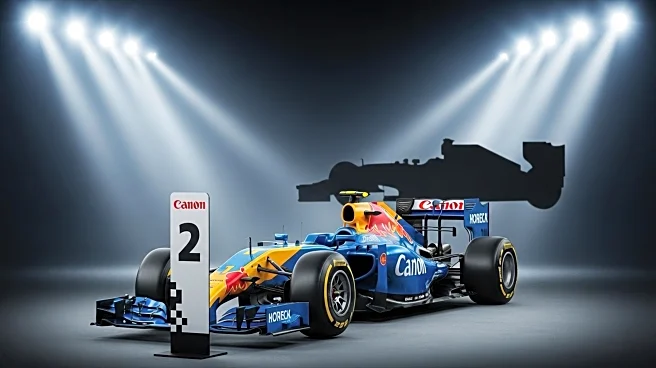What's Happening?
Oscar Piastri secured victory at the Dutch Grand Prix, a significant event in the Formula One season, held at Circuit Zandvoort in the Netherlands. Piastri, driving for McLaren, led all 72 laps of the race, maintaining his position despite pressure from his teammate, Lando Norris. Unfortunately, Norris faced mechanical difficulties due to an oil leak, forcing him to retire from the race with seven laps remaining. This incident brought out the safety car for the third time during the race. Earlier, Ferrari drivers Lewis Hamilton and Charles Leclerc were involved in separate crashes, preventing them from finishing. Piastri's win earned him 25 points, extending his lead over Norris in the drivers' championship by 34 points.
Why It's Important?
Piastri's victory at the Dutch Grand Prix has significant implications for the Formula One championship standings. With nine races left in the season, Piastri's lead in the drivers' championship positions him as a strong contender for the title. McLaren's dominance in the constructors' championship is further solidified, with the real competition now focused on second place. The race also highlighted challenges faced by Ferrari, as both Hamilton and Leclerc failed to finish, reducing their lead over Mercedes in the team standings. This shift in dynamics could influence team strategies and driver performances in upcoming races.
What's Next?
As the Formula One season progresses, teams will likely reassess their strategies to address mechanical reliability and improve race outcomes. McLaren will aim to maintain its lead in both the drivers' and constructors' championships, while Ferrari and Mercedes will focus on closing the gap for second place. The upcoming races will be crucial for drivers like Norris, who will seek to recover lost points and challenge Piastri's lead. Additionally, rookie drivers like Isack Hadjar, who achieved his first F1 podium, may gain confidence and momentum, impacting future race results.
Beyond the Headlines
The Dutch Grand Prix underscores the unpredictable nature of Formula One racing, where mechanical issues and weather conditions can dramatically alter race outcomes. The event also highlights the importance of teamwork and strategy in navigating such challenges. As teams analyze the race data, they may explore innovations in car design and technology to enhance performance and reliability. The race serves as a reminder of the competitive spirit and resilience required in motorsport, influencing the culture and approach of teams and drivers.











